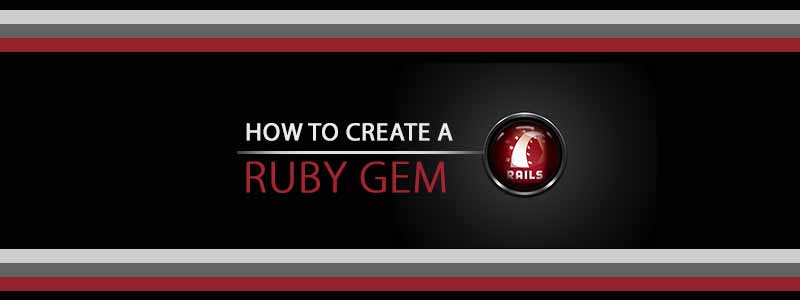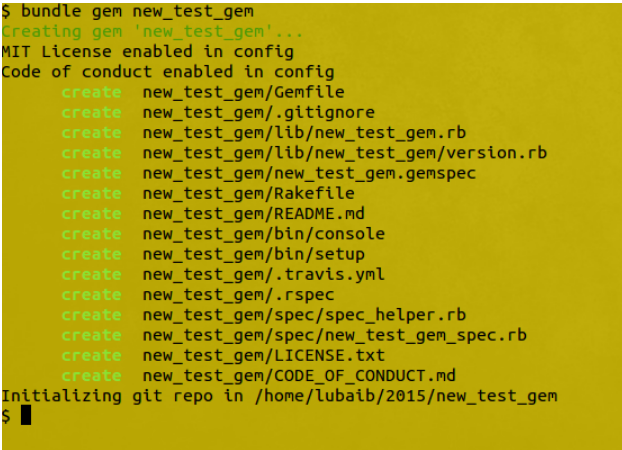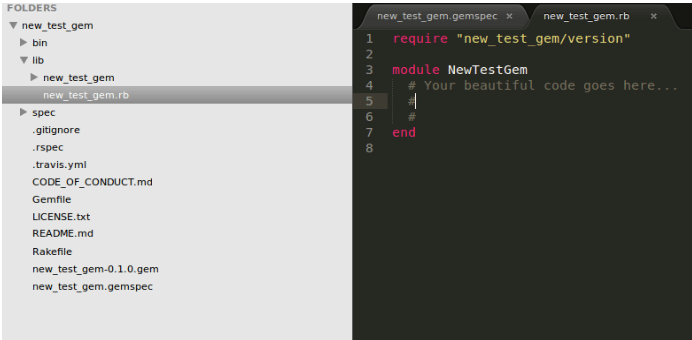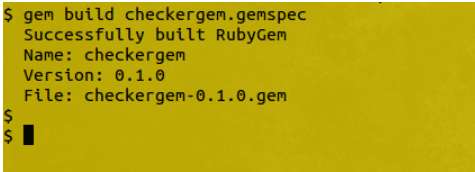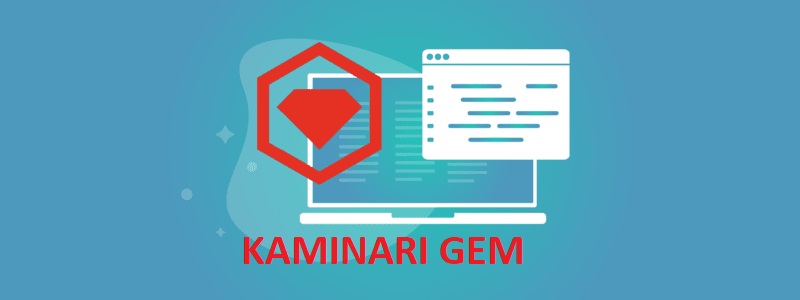Ruby Gems or “gem” is a package manager for the Ruby programming language that provides a standard format for distributing Ruby programs and libraries. It is easy to manage and install to your system and it can be used by various rails applications.
Every RoR developer might have customised a gem at least once in his career, but not each one of them has actually, created a gem. Here, I am going to give a basic idea about how to create a new gem and how to publish it.
Beginnen
Bevor Sie beginnen, stellen Sie bitte sicher, dass Sie die neueste Ruby-Version verwenden. RVM ist in diesem Fall wirklich nützlich;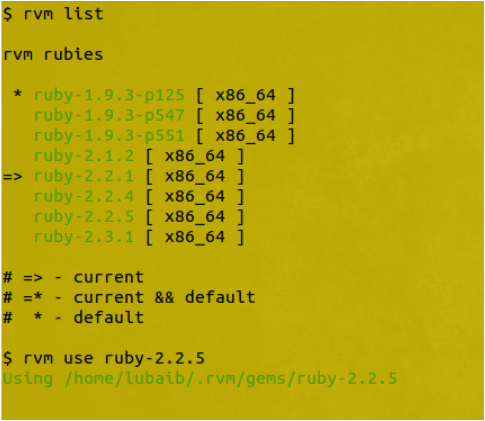
How to name your Gem?
Don’t blindly give a random name to your gem. Please take care of the following;
Every Der Strich stellt eine Struktur dar (folder, module) immersion
Every Der Unterstrich stellt eine Verknüpfung im Klassennamen dar
Some examples:
gem new_test_gem
- benötige 'new_test_gem'
- Modul/Klasse NewTestGem
And:
gem gem-structure-new_test_gem
- require 'gem/structure/new_test_gem
- Modul/Klasse Gem::Structure::NewTestGem
How to create your Gem?
Ein Juwel erschaffen;
$-Bundle-Gem new_test_gem
Es werden einige grundlegende Dateien und Verzeichnisse erstellt.
Where to add your code or job
Your beautiful code goes here
# lib/new_test_gem.rb
Sobald Sie Ihren Code in die lib-Datei eingefügt haben, müssen Sie die gemspec-Datei aktualisieren;
# new_test_gem.gemspec
What is Gem Versioning?
# lib/new_test_gem/version.rb
module NewTestGem
VERSION = “0.1.0”
Ende
A couple of things about what you create
- Eine Gem-Version ist eine Folge von 3 Zahlen – „XYZ“.
- Inkrementieren von X, Y, Z
incrementing Z, a small change and it’s called the ‘build’ number(e.g. changing label/text) and no change in any functionality.
incrementing Y, a new functionality change and it’s called the ‘minor’ number. But no compatibility issues with the previously released versions.
incrementing X, severe change and it’s called the ‘major’ number and the change no longer compatible with the previous versions.
The gem below (Gem-release) helps you to version your gem with a simple ‘bump’ command.
Gem-Release-Edelstein:
https://github.com/svenfuchs/gem-release
How to build your Gem?
Sobald wir unsere Gemspec haben, müssen wir daraus einen Gem bauen. Wir können es dann lokal installieren, um es zu testen.
Installation und Test
Once your gem is built, you will have to install it to your system.
And of course, you have to test it properly.
$ gem install ./new_test_gem-0.1.0.gem
How to push your Gem?
Dazu müssen wir ein Konto erstellen RubyGems.org.
Then, it will be available to the other rubyists all over the world through rubygems.org.
This is done by;
$ gem push new_test_gem-0.0.1.gem
Um dies zu überprüfen, wird Ihr Edelstein in RubyGems.org hinzugefügt
$ Gem-Liste -r new_test_gem
Das Ende
That’s all it takes to create a gem!
If you want to create a Ruby Gem, you can further read through the following write-ups;
http://guides.rubygems.org/make-your-own-gem/
http://railscasts.com/episodes/135-making-a-gem
https://gorails.com/episodes/creating-gems-for-frontend-javascript-libraries

